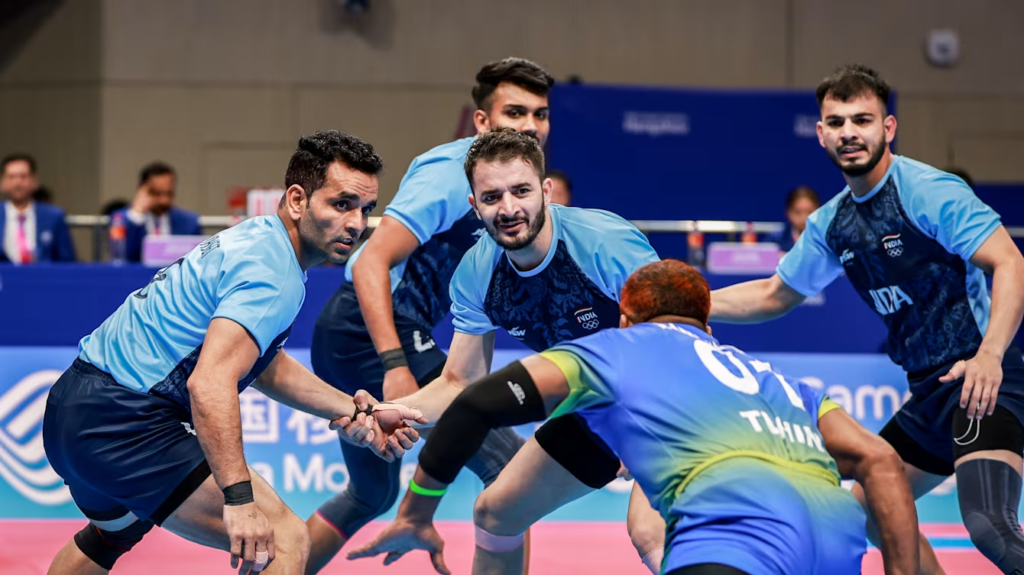
Kabaddi is a popular sport in many parts of the world, particularly in South Asia. The high-intensity game requires a unique mix of strength, agility, and strategy, making it a favorite among fans and players alike. One of the key aspects of Kabaddi is the number of players that make up a team. In this article, we will explore the different variations of the game and how many players in Kabaddi make up a team.
Understanding the Basics of Kabaddi
Before delving into the specifics of team composition, it is important to understand the basics of Kabaddi. The sport originated in ancient India and has evolved over the years to become a competitive and entertaining game. Kabaddi is played on a rectangular court, with two teams facing off against each other.
The objective of the game is for a “raider” from one team to enter the opposing team’s half of the court, tag as many players as possible, and return to their own half without being tackled. The defenders must try to stop the raider from accomplishing this task by tackling them before they can return to safety. Points are scored based on successful tags and tackles, with the team accumulating the most points declared the winner.
Variations of Kabaddi
There are several variations of Kabaddi played around the world, each with its own rules and regulations. The most common variations include:
1. Standard Kabaddi: This is the traditional form of the sport, played on a rectangular court with two teams of seven players each. The teams take turns sending a raider into the opposing team’s half, with points scored for successful tags and tackles.
2. Beach Kabaddi: As the name suggests, this variation is played on a sandy beach instead of a traditional court. The number of players on each team can vary, but the basic rules remain the same.
3. Circle Kabaddi: In this version of the sport, the court is circular instead of rectangular. Each team has a set number of players, typically five or six, who take turns raiding and defending.
4. Kabaddi World Cup: This international competition features teams from around the world competing in standard Kabaddi matches. The number of players on each team is fixed at seven, following the traditional format of the sport.
How many players in Kabaddi Teams?
In standard Kabaddi, each team is composed of seven players on the court at any given time. These players are divided into different positions, each with specific roles and responsibilities:
1. Raiders: The raiders are responsible for entering the opposing team’s half, tagging as many players as possible, and returning to safety. They must be quick, agile, and strategic in their approach to scoring points for their team.
2. Defenders: The defenders are tasked with stopping the opposing team’s raiders from scoring points. They must work together to anticipate the raider’s moves, make timely tackles, and prevent them from returning to safety.
3. All-Rounders: Some players in a Kabaddi team serve as all-rounders, capable of both raiding and defending. These players must be versatile and adaptable, able to switch between roles depending on the situation.
The number of players on a Kabaddi team can vary depending on the variation being played. In beach Kabaddi and circle Kabaddi, the number of players on each team may be reduced to five or six to accommodate the smaller court size. However, in standard Kabaddi matches, the traditional format of seven players per team is maintained to ensure a fair and competitive game.
The Importance of Team Composition
Team composition plays a crucial role in the success of a Kabaddi team. A well-balanced lineup with skilled raiders, defenders, and all-rounders can give a team a competitive edge on the court. Each player must understand their role and work together with their teammates to achieve the common goal of winning the match.
Communication, coordination, and strategy are key components of a successful Kabaddi team. Players must be able to work together seamlessly, anticipate each other’s moves, and adapt to changing situations on the court. By practicing together and developing a strong team dynamic, players can maximize their potential and improve their chances of victory.
In conclusion, the number of players in a Kabaddi team varies depending on the variation being played. In standard Kabaddi matches, each team consists of seven players on the court at any given time. However, in beach Kabaddi and circle Kabaddi, the number of players may be reduced to five or six to accommodate the specific rules of the game.
Regardless of the variation, team composition is crucial to the success of a Kabaddi team. Players must understand their roles, communicate effectively, and work together to achieve victory on the court. By developing a strong team dynamic and practicing regularly, players can improve their skills and enhance their performance in this exciting and dynamic sport.
Can’t get enough of sports? Check out Sport Circle’s Youtube Channel here. Want more bite-sized content? Follow us on Instagram and Twitter!
